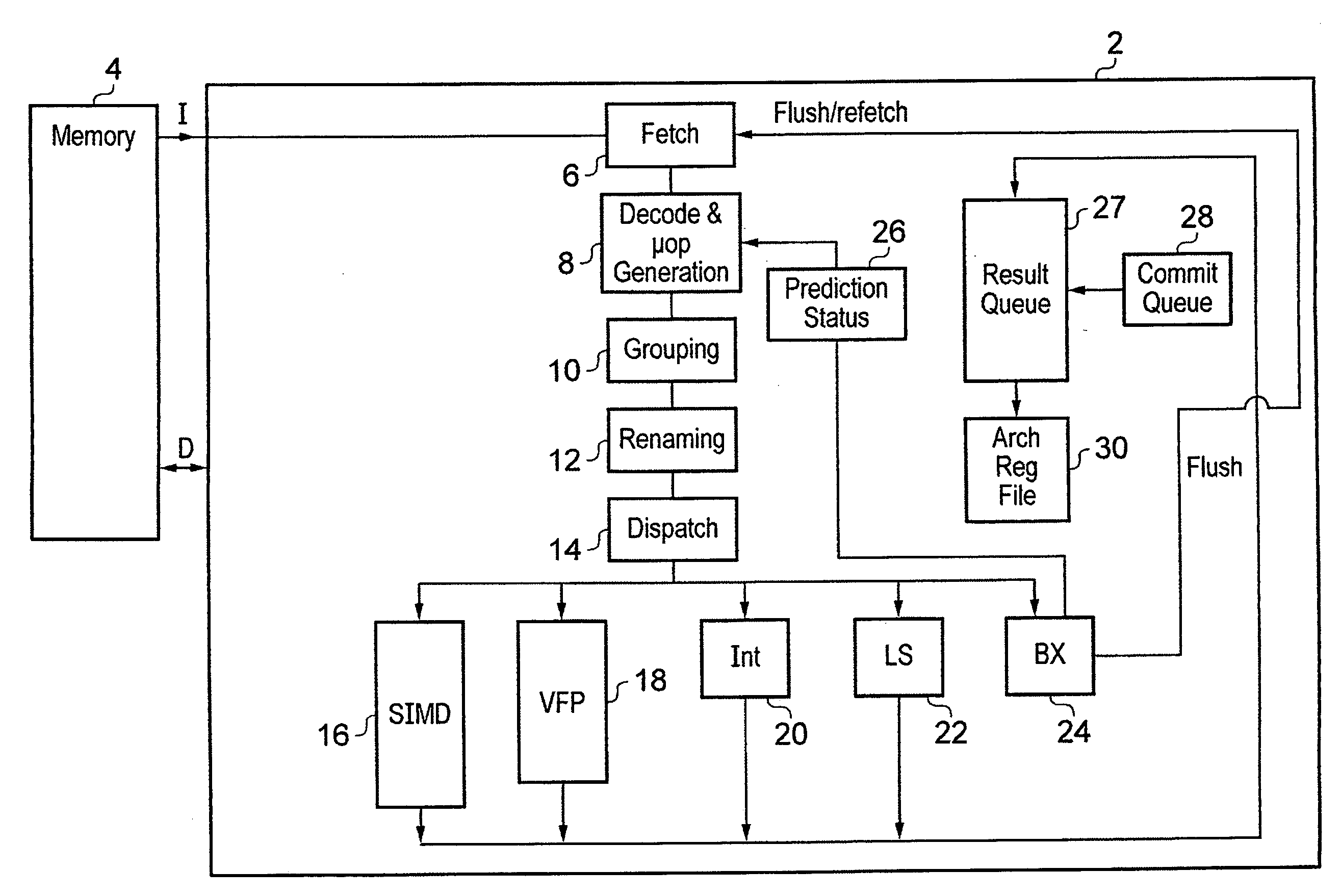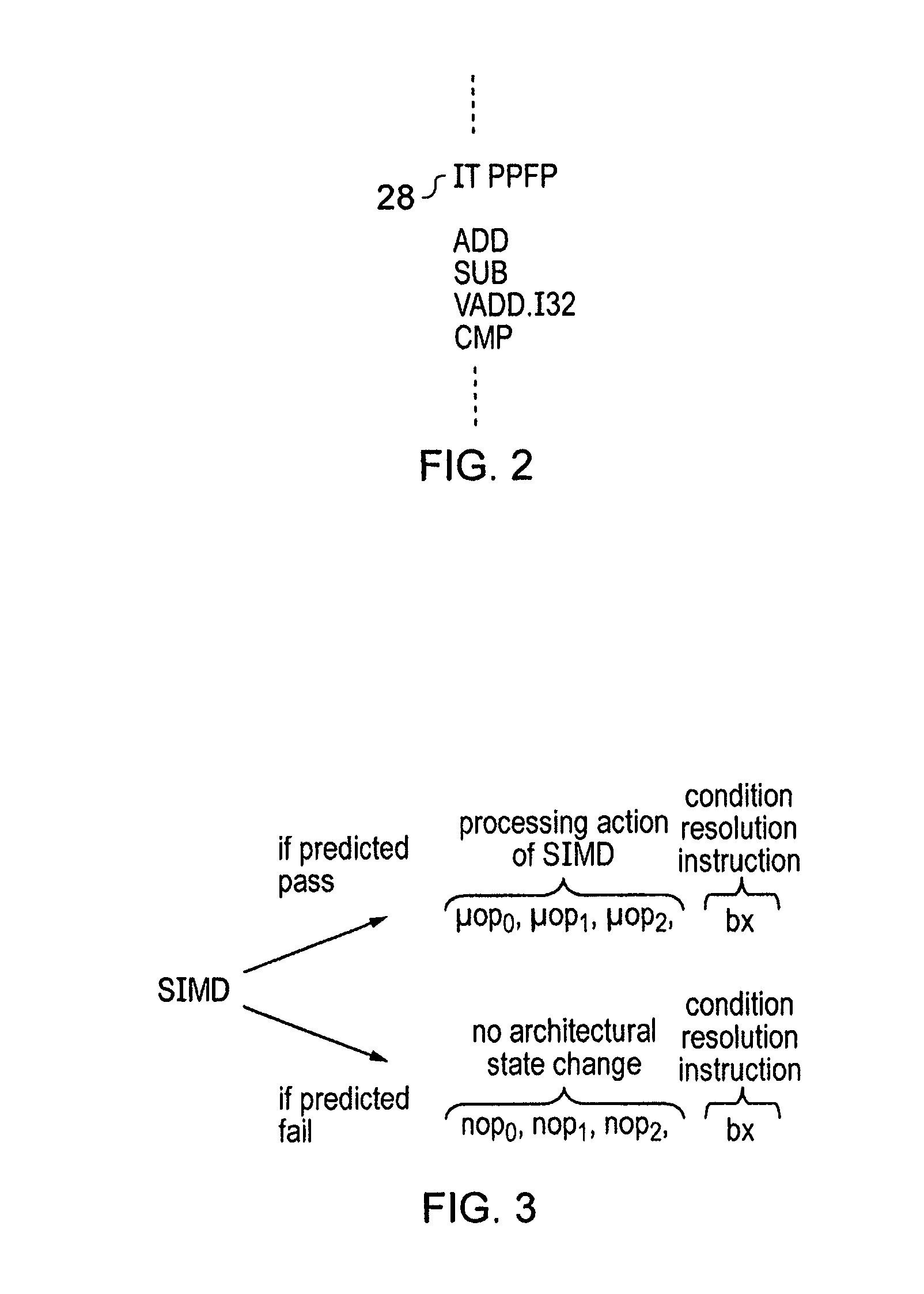Decoding conditional program instructions
a conditional program and instruction technology, applied in the field of data processing systems, can solve the problems of slow execution of conditional program instructions, extra operand routing within the processor, increasing cost and circuit overhead, etc., and achieve the effect of improving the commonality of decoding hardwar
- Summary
- Abstract
- Description
- Claims
- Application Information
AI Technical Summary
Benefits of technology
Problems solved by technology
Method used
Image
Examples
Embodiment Construction
[0052]FIG. 1 schematically illustrates a processor 2 coupled to a memory 4 storing program instructions to be processed and data values to be manipulated. Within the processor 2 a stream of program instructions passes through a sequence of processing stages including a fetch stage 6, a decode and micro-op generation stage 8, a grouping stage 10, a renaming stage 12 and a dispatch stage 14 that dispatches the grouped and renamed micro-operation instructions into one of a plurality of processing pipelines including a SIMD pipeline 16, a vector floating point (VFP) pipeline 18, an integer pipeline 20, a load / store pipeline 22 and a branch resolution pipeline 24. The branch resolution pipeline 24 serves to resolve conditional branch instructions and in accordance with the present technique serves to resolve the conditional resolving micro-operation instruction which is added to each of the two decodings of the conditional program instruction in the form of a conditional branch instructi...
PUM
 Login to View More
Login to View More Abstract
Description
Claims
Application Information
 Login to View More
Login to View More - R&D
- Intellectual Property
- Life Sciences
- Materials
- Tech Scout
- Unparalleled Data Quality
- Higher Quality Content
- 60% Fewer Hallucinations
Browse by: Latest US Patents, China's latest patents, Technical Efficacy Thesaurus, Application Domain, Technology Topic, Popular Technical Reports.
© 2025 PatSnap. All rights reserved.Legal|Privacy policy|Modern Slavery Act Transparency Statement|Sitemap|About US| Contact US: help@patsnap.com



